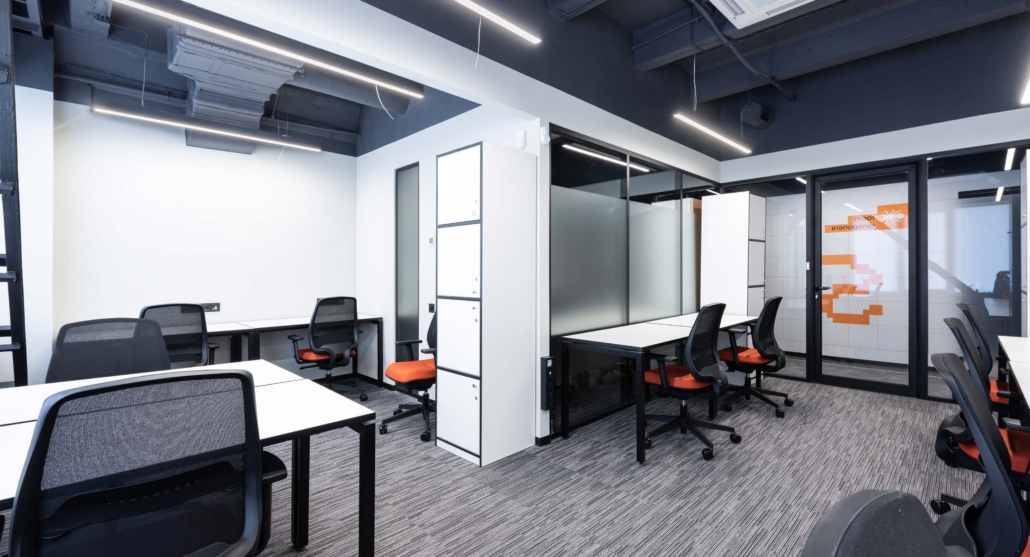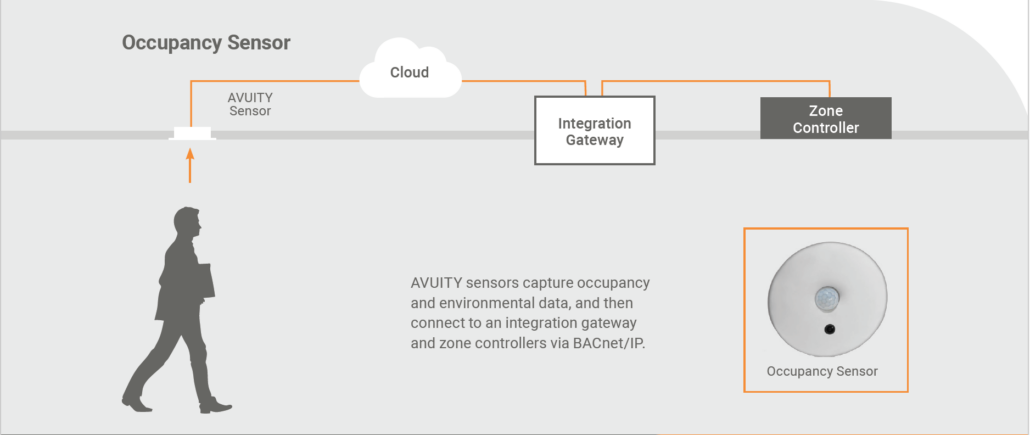Occupancy Sensor — HVAC Integration
Download the full Occupancy Sensor HVAC Integration Guide as a PDF here.
Since HVAC systems are one of the largest energy consumers in commercial buildings, optimizing them to deliver comfortable indoor environments with as little energy as possible has long been an important design goal. However, it has until recently not been common practice to install occupancy sensors along with the HVAC system. Since HVAC systems use substantially more energy in occupied mode than in unoccupied mode, occupancy sensor retrofits and subsequent integration with HVAC controls represent a substantial energy savings opportunity for many buildings. Often, 10% savings and in some cases, much more may be achieved.
Overview of Energy Savings Opportunities
When a building is occupied, the HVAC system consumes energy for two primary purposes: conditioning and ventilation. Conditioning refers to maintaining indoor temperature and humidity within desired ranges; ventilation refers to providing an adequate supply of fresh (typically outdoor) air for the occupants. When a building is unoccupied, it is usually acceptable to reduce both loads by reducing airflow as well as increasing the range of acceptable temperature; this is reflected in standards such as ASHRAE Standard 62. With occupancy sensors, the primary optimization opportunity in HVAC controls available is to better match the periods of the time when the system is “occupied” mode with the actual occupancy of the building.

Strategy 1: Schedule Trimming
Many buildings (especially offices) are not occupied 24/7; they are primarily occupied during business hours. For this reason, nearly every HVAC control system has the ability to create schedules which change setpoints throughout the day or week. For instance, a typical system might switch the building from unoccupied mode at 6AM and turn it back off at 6PM. The details of if a building is truly “off” (e.g., no equipment is running,) or simply “set back” vary from building to building. With occupancy sensors, an operator may wish to adjust building schedules both at the whole building as well as the zone level either manually or automatically. For instance, analysis of occupancy data may demonstrate that no zones are occupied for a period at the beginning and end of the day; even a 30-minute daily reduction in operating time may result in significant savings.
Strategy 2: Dynamic Occupancy Mode Switching
Even when the building is on, individual zones are typically not continuously occupied. Occupancy sensors allow the building to respond to these changes at a finer granularity, dynamically switching between occupied and unoccupied setpoints based on sensor values. Implementers must balance energy savings achieved by setting back setpoints in unoccupied setpoints with the time required to bring a zone back within occupied setpoints. For instance, allowing a conference room to substantially warm up before a meeting to save energy may result in the system being unable to condition the room once it suddenly fills up with people.
Implementation using Normal
Normal is a software supervisory control framework that allows advanced data integration and control of IoT and building management systems via many protocols, including BACnet. AVUITY is a trusted partner and reseller of Normal software, and AVUITY products integrate seamlessly with Normal to enable occupancy-based control of HVAC systems with minimal configuration. Simply provide access to 1) an IP address on the BMS LAN and 2) outbound access to AVUITY cloud.
Building Qualification
For these strategies to be applicable and possible to retrofit, there are a few project prerequisites which should be confirmed as early as possible. Also, further savings may be possible with additional optimizations; however, these tend to depend on the HVAC system architecture, whereas the two we have presented are nearly universally applicable. Questions to ask include:
- Is the mechanical system zoned, and do the different zones have the capability to modulate their activity between occupied and unoccupied setpoints? For instance, VAV systems with a central air handler typically have a good granularity of control, while central constant volume systems have much more limited controllability.
- Is the system controlled by DDC and is it possible to integrate centrally using BACnet? For instance, a system with several independent rooftop units may have multiple zones, but if the RTUs are not networked, additional work will be required to connect them each to the relevant occupancy data. Additionally, does the existing program have both occupied and unoccupied modes of operation in each zone? Determining the manufacturer and product name of the HVAC equipment and controls often is enough to get started.
- Do the HVAC zones and retrofitted occupancy sensors overlap? If only portions of the building are being monitored by the sensors it my limit how much schedule trimming can be applied.

Wrapping Up Your Experience
Controls Integration
Implementing either of these strategies presents the implementor with several questions. Should the existing BAS be reprogrammed to take advantage of occupancy data? Where should the decision making run? The answer usually depends on the capability and willingness of any existing staff to reprogram their control system; but at a high level there are two main options.
- Expose occupancy data to the BAS, and alter its programming to use it. For instance, the occupancy data could be published as BACnet points which are then read by existing control logic as an input that controls which setpoints are active; it could also be used to modify the startup time.
- Alternatively, write overridden setpoint values to the BAS. For instance, an integrator with access to the BAS could use occupancy data to write different setpoints each time the occupancy state of a zone changes; and to turn the building on or off at a time different from the underlying schedule. Whichever method is chosen, there will be some effort required to map occupancy sensor regions to HVAC zones, so as to ensure each sensor is controlling the correct zone.




Leave a Reply
Want to join the discussion?Feel free to contribute!